This website may earn money from qualifying product recommendations in this well-researched article.
Have you ever thought of this?
Which method for sharpening hair clipper blades is the best, easiest, and quickest?
If that’s what you’re seeking, you’ve arrived in the right place.
Although most hair clippers have an auto-sharpening feature that maintains the blades sharp, if they are not frequently maintained and cleaned, they can wear out quickly.
Sharpen your blades whenever you discover difficulties to avoid jagged, uneven cuts and snagged hair.
If you don’t clean the blades beforehand to eliminate hair and rust, they won’t sharpen properly.
How to Sharpen Hair Clipper Blades 2025:
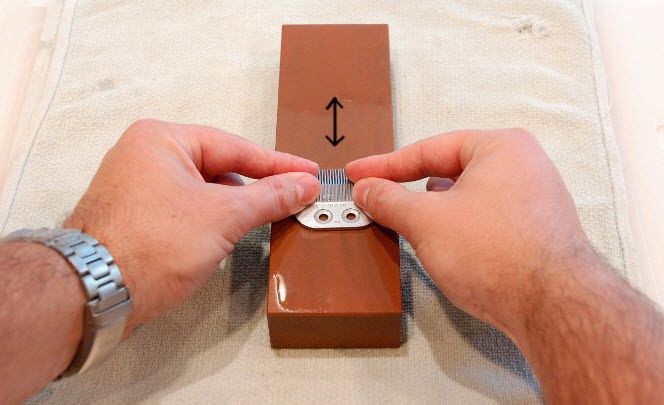
What You’ll Need:
Here are some things you’ll need if you’re a first-timer:
- Screwdriver – This is what you’ll need to remove the clipper’s blades and replace them.
- Sharpening Stone — For optimal results, use a 3000 and 8000 grit combination.
- Toothbrush (Cleaning) Brush – In most cases, a toothbrush is stiffer and far superior to a clipper’s cleaning brush.
- A marker will let you estimate the total surface area removed from your blades.
- Instead of a rag or paper towel, consider using a microfiber cloth. This will be ideal to remove debris or dirt from your blades.
- Warm Water or a Cleaning Solution of Your Choice.
- The greatest part is that all of the items are easily accessible, making this post excellent for individuals who want to sharpen clipper blades at home.
- It’s time to go to work once you’ve gathered all of these items.
What Is a Clipper?
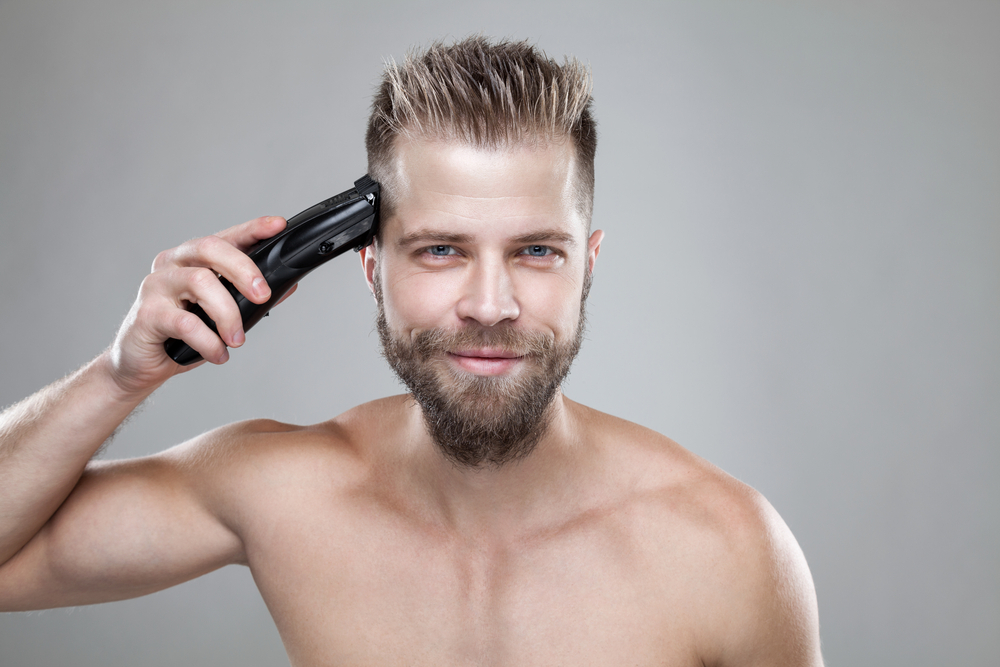
A hair clipper is a gadget that aids in hair cutting and trimming.
It makes grooming a breeze, especially for guys who require frequent haircuts and trims.
You should visit your barber or hairstylist regularly, but a hair clipper can help you cut down on the number of appointments.
A hair clipper is similar to a hair trimmer in that it is used to cut hair.
How Does It Help?
It allows you to cut your hair quickly and simply at home. Hair clippers, on the other hand, have the advantage of being intended to cut lengthy hair.
If your hair is too long, a hair trimmer may pull it, but the hair clipper does not.
You can profit from hair clippers in several ways. They make it simple to trim all hair lengths, and they come with a variety of attachments, such as combs, to help you cut certain lengths of hair.
Hair clippers make it much easier to handle your hair while trimming. Scissors can be difficult to use when cutting your hair.
Everything you need to know about: is covered in this article.
So relax and follow this simple, step-by-step guide to sharpen clipper blades.
What Happens if Clipper Blades Go Dull?
If you’ve ever used a dull clipper blade, you know that it’s not a pleasant experience.
The hair gets caught in the blade, and it just doesn’t cut as well as a sharp blade. But what actually happens to your clipper blade when it goes dull?
The first thing that happens is that the cutting edge of the blade starts to wear down. This is because the metal is being chipped away each time it comes into contact with a hair.
Over time, this will eventually lead to the cutting edge becoming completely rounded off.
Once this happens, the clipper blade is no longer able to make clean cuts through the hair. This means that each time you use it, you’ll end up with a lot of split ends.
In addition, the clipper blade will start to tug at the hair, which can cause pain and discomfort.
If you continue to use a dull clipper blade, it will eventually damage the motor of your clipper.
This is because the metal shavings from the blade will end up in the motor, causing it to overheat and eventually break down.
So, what can you do to prevent your clipper blade from going dull? The best thing to do is to regularly sharpen the blade.
You can either do this yourself with a sharpening stone or take it to a professional who can do it for you.
If you do decide to sharpen the blade yourself, make sure you do it correctly. You don’t want to end up damaging the blade even further
Are You Certain You Require Sharpening?
The very first question you ask yourself. Your clipper blades are most likely not dull and do not require sharpening.
It could be that it’s filled with crap, which is why it’s not cutting cleanly.
When was the last time you cleaned and disinfected your blades?
Also, did you see all the junk in the nook where the blades sit? Yes, you must ensure that everything is clean!
Did You Apply Lubricant?
Friction is inevitable when moving parts come into contact.
They will quit cutting smoothly in the case of your blades.
Simply lubricating with oil can remedy this problem.
Do You Use Them to Groom Your Dogs?
If you trim your dog with clippers, expect them to dull faster than usual.
Remember that dog fur/hair is nothing like human hair.
Because it’s thicker and coarser, it’ll dull an edge considerably more quickly.
As a result, it’s unlikely that you’ll need to sharpen your clipper blades.
They should run well again after a thorough cleaning in hot water, towel drying, and a generous layer of oil.
How Can You Tell if Your Clippers Are Dull?
If the blade’s rail is ground flat, it will drag or snag in the coat.
The rail creates space for the blade, allowing the hair to escape.
The blade will not cut if there is no rail at all. The blade will have to be replaced because it cannot be amended or fixed.
You must ensure that you have everything required to sharpen your clipper blades.
3 Things to Consider Before Sharpening:
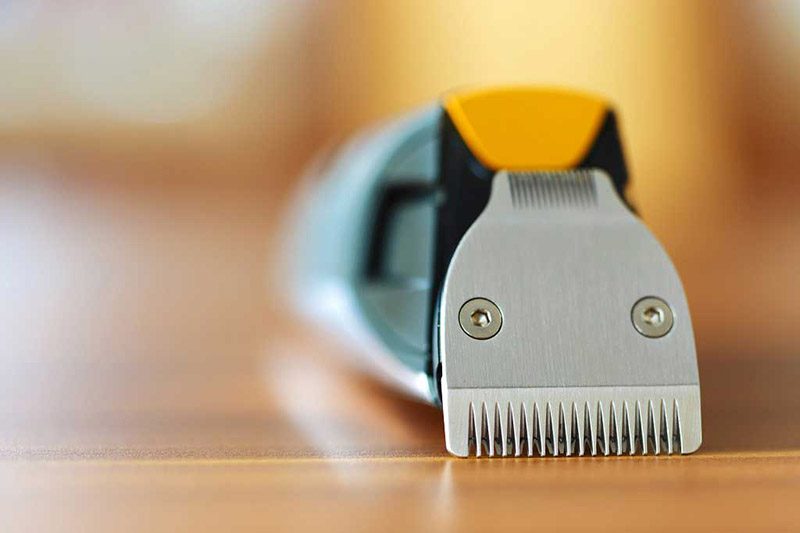
#1. Have You thought About Using a Sharpening Service?
Some people are uninterested in learning how to sharpen clipper blades.
Some people would prefer to pay to have it done by a professional cutler.
There’s nothing wrong with this at all! It’s my preference to do it myself, but it’s not just about saving money.
If you’ve ever sharpened something, you know how satisfying it is to restore an edge. There’s nothing else like it!
If you want to get your blades sharpened by a professional cutler. shop around for the best deal.
Professional cutlers are normally available both locally and internationally. Choose wisely!
#2. Have You Considered Replacing Your Blades?
Another factor to think about is blade replacement.
In the vast majority of circumstances, it is neither desirable nor necessary.
However, if a blade is severely damaged or corroded, it may need to be replaced.
You’ll only be able to know if you study the blade carefully. Important: if you do need a replacement blade, make sure you get the original from the manufacturer.
Avoid generics and knock-offs at all costs!
#3. Go Get Some Stones!
If you don’t already have sharpening stones, now is the time to get some!
Why? They’re useful for sharpening just about anything!
Diamond stones are my favorite because they are easy to care for (no need to flatten, no need to lubricate).
A Dependable Blade Is Sharp:
Blades are straightforward and useful tools. A well-maintained edge will last you for many years.
You won’t have to spend any money on your clippers now that you know how to keep the edge clean, lubricated, and sharp. My first pair of clippers lasted ten years without needing to be replaced.
But the most valuable aspect of this experience was learning how to utilize a whetstone. Sharpening scissors and kitchen knives can now be practiced.
When you use a sharp blade, it will cut exactly when you want it to. Get out the whetstone and practice whenever you lose confidence in your edge.
Trustworthy people use trustworthy blades. So be dependable and maintain a razor-sharp edge.
How to Sharpen Clipper Blades in 6 Easy Steps:
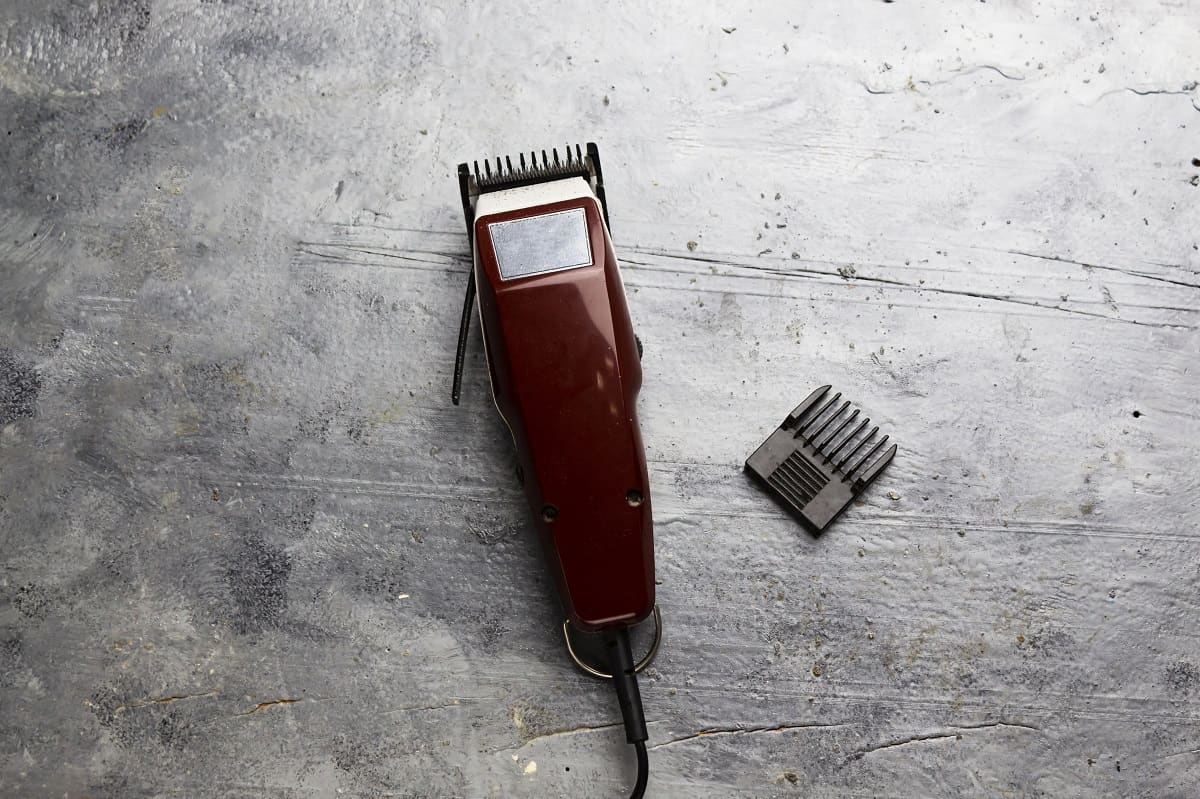
Clippers are a convenient way to trim your hair, especially if you’re at home and the salons are closed.
However, for these clippers and their blades to function properly, they must be maintained regularly.
Let’s get started…
What’s the Best Way to Go About It?
To begin, keep in mind that clipper blade performance might decline owing to dirt accumulation and that blades are not always blunt.
As a result, sometimes all you need to do is clean your clipper.
We spend many hours trimming your hair, but do we devote enough effort to maintaining the clippers we use?
It’s best to learn how to sharpen hair clipper blades if you want to increase the efficiency and lifespan of your clippers.
However:
Here are some quick tips for sharpening your clipper blades…
Start by Removing Your Clipper Blades by Unscrewing Them:
It’s as simple as 1.2.3 to remove clipper blades.
Disconnect the blades from the rest of the clippers by unscrewing the screws that connect them.
Two screws are found at the base of the blade on most hair clipper models. Remove the blades and any bits that are keeping them in place after you’ve removed these.
To remove your blades, just unscrew the two screws at the back.
Use a pair of tweezers to remove the bottom blade off the base if it does not pop out easily.
To make reassembly easier, take note of how the pieces fit together and where the blades are about one another.
It’s largely about cleaning and ensuring that everything is for a quick self-cut.
Remember:
These two screws are not found on all clippers, particularly those with detachable blades.
However, the removal process is similar.
Clipper Blades Should Be Cleaned:
Maintaining your hair clippers may make them much simpler to use, as well as allowing you to sharpen them uniformly and without making a mess.
To wipe the hair lodged in the blades, use a wire brush, steel wool, or a toothbrush.
Remove any dirt and debris from both of your clipper blades using your tooth/cleaning brush.
As a result,
- Sharpening the blades becomes much more manageable for you.
- It’s also cleaner.
After that:
Warm water or isopropanol alcohol can be used to clean the blades.
Using Blade Wash, You May Get Rid of Rust:
Scrub the sides of the blades with a clean towel to dry them up and remove any remaining dust or dirt.
If you still see rust stains, reapply the cleaning solution.
If cleaning fails to remove the rust, the blade would need to be replaced.
Use blade wash or another blade cleaning chemical if you notice any rust on your blades, or if brushing doesn’t remove all of the dirt.
To eliminate excessive rust accumulation, soak the blades in a small dish of this for a few minutes, or dip a cotton ball in it and scrub the blade.
Some individuals say isopropyl alcohol works, but you’ll need to obtain a strong, 90% alcohol solution.
Drying and Testing:
If your hair clippers are self-sharpening, it’s conceivable that all they required was a good cleaning.
Prepare your blades by drying them and putting them to the test.
Assemble and test out the clippers by turning them on for a few minutes, then rearranging them.
Move on to the sharpening methods in the next section if they are still dull or snagging hairs.
Apply a few drops of hair oil to your hair before testing to get the best results.
You can dry and reattach your clipper blades back onto your clipper once cleaning and before you start sharpening them to check whether there’s a performance increase.
Even though it is an optional step, testing allows you to determine whether or not your clipper blades need to be sharpened.
Setup Your Sharpening Stone and Blades:
Make sure that the blade’s base is placed in a magnet, with the blade’s sharp edge protruding beyond the magnet’s edge.
This will make sharpening the blade easier without cutting yourself or dropping the blade.
Instead, a strong, flat magnet might work.
If you use this device, sharpen slowly to avoid the blade falling off the magnet and potentially nicking you.
Sharpen both blades one at a time by following the steps outlined below.
- Mark the interior sides of both of your blades with your marker pen.
- Once the clipper is running, the internal sides are the blade sides that lay on one another.
- By marking the blades, you can easily see how much you’ve worn them down and avoid overdoing them.
- If you have the greatest clipper blade sharpener, clean both gritty surfaces with your brush to verify there is no unwanted waste.
- To lubricate your sharpener, squirt some water on it.
To Work with A Ceramic Blade:
To work with a ceramic blade, you’ll need a diamond sharpening stone.
Look at the label carefully, and don’t confuse ceramic sharpening stones with sharpening stones that can also sharpen ceramic.
Both of Your Blades Should Be Sharpened:
Set your clipper blade straight to your sharpening stone, level and parallel.
Keep in mind that you’re simply sharpening the blades inside.
For durability and even due to wear, lightly brush on the blade and move it back and forth along the stone’s whole top surface.
Also, keep an eye on the marker highlight to see whether it’s fading.
The highlight should be gone after around 15 passes, and the blade should be sharpened.
After that, flip the sharpening stone over and repeat the process with the same blade.
After that, repeat the operation with your cutting blade.
Ensure that the blades are pointing in the same direction as when they were first installed and that the spacing between them is close to the original.
The blades should be properly screwed in place.
Clean, Dry, and Reattach the Blades to The Clipper:
To begin, clean the blades to eliminate any dirt or debris that has accumulated as a result of the sharpening.
Then, much like in Step 1 above, dry the blades and screw them onto your clipper blades.
Clipper Oil Should Be Used:
After that, you should turn on your clipper and use a couple of drops of clipper oil to lubricate the blades.
This procedure should be done every two or three uses, but especially if the blades have recently been sharpened.
To avoid overheating and reduce friction, a few drops of oil should be applied to the blades.
While a mild, penetrating oil can be used instead, stay away from heavy, black oils that can clog the blades.
Clipper oil should be used exclusively.
Other oils may cause the blade to rust.
Professional clipper oil is available at any supply store.
Before using a new oil for the first time, consult a barber or look it up online.
For a Few Minutes, Run the Clippers:
Switch on the clippers and rub the blades together for a few minutes.
This will sharpen the blades even more.
The cutting edge of your clippers should now be substantially sharper and easier to operate.
What for?
It not only distributes the oil uniformly, but it also maintains your blades sharp for a long time.
After that, clean your tools and store them somewhere secure until you need them again.
What are Self-Sharpening Hair Clippers?
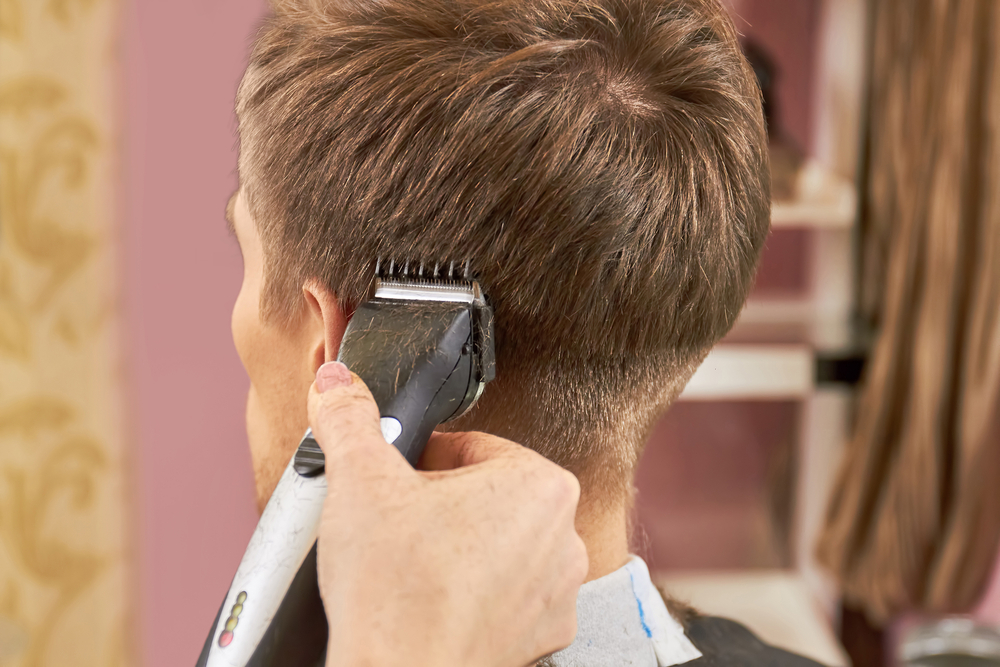
One of the most recent advancements in hair clipper technology is self-sharpening blades. This is a much-needed function that greatly simplifies our lives.
The blades of these clippers are kept sharp using a simple process.
A blade and a piece of metal rub against each other and produce friction in self-sharpening clipper blades.
This sharpens the blades every time the power button is turned on, so you never have to bother about manually sharpening them.
Maintenance Tips for Clipper Blades:
- There are a variety of blade sharpening devices available, including those that are specifically designed for clipper blades.
- A basic, two-sided sharpening stone is usually sufficient for home use, but if you need to sharpen clipper blades frequently, you may want to experiment with alternative items.
- Instead, take your blades to a professional cutler or sharpening service, either locally or through the mail to the maker of your hair clippers.
- Put the blades through an industrial cleaning solution while it is running to remove fur and other debris.
- Allow the clippers to run for a few seconds to clear debris from the blades and lubricate them.
- Ceramic blades are extremely fragile and can easily break when used on thick or matted hair or when overtightened, therefore they require less regular sharpening.
Dangers:
- Hair clippers may wear out faster while clipping animal hair than when clipping human hair.
- Keep in mind that after sharpening the blades, it may be easier to cut yourself. Reassembling the clippers should be done with caution.
Interesting Fact:
If you want to sharpen clipper blades with sandpaper, you can do so…
If you use hair clippers at home, make sure you take good care of them so they last a long time.
Sharpening hair clipper blades can save you a lot of time and money.
If you sharpen your hair clippers at regular intervals, you can use them for months at a time.
A sharp blade also guarantees a smooth shave free of nicks, pulling, or ingrown hairs.
However, as long as you utilize the grit ratings and follow the steps indicated above, you should be fine.
You now know everything there is to know about sharpening clipper blades.
Also Read: Top 7 Best Fade Clippers Reviews – 2025 Buyer’s Guide
Conclusion!
There’s no joy cutting hair with dull clipper blades. They don’t always cut smoothly and tend to pull or snag hair.
It’s the same as attempting to use a dull knife, which is not only time taking but harmful as well.
Your blades make the most of your clippers, and without them, even your most expensive and coolest clippers are of no use.
And we know you cannot change your clippers that often so why not invest in some teeny tiny tools to keep your blades sharpened and your clipper in perfect condition to use for a long period of time.